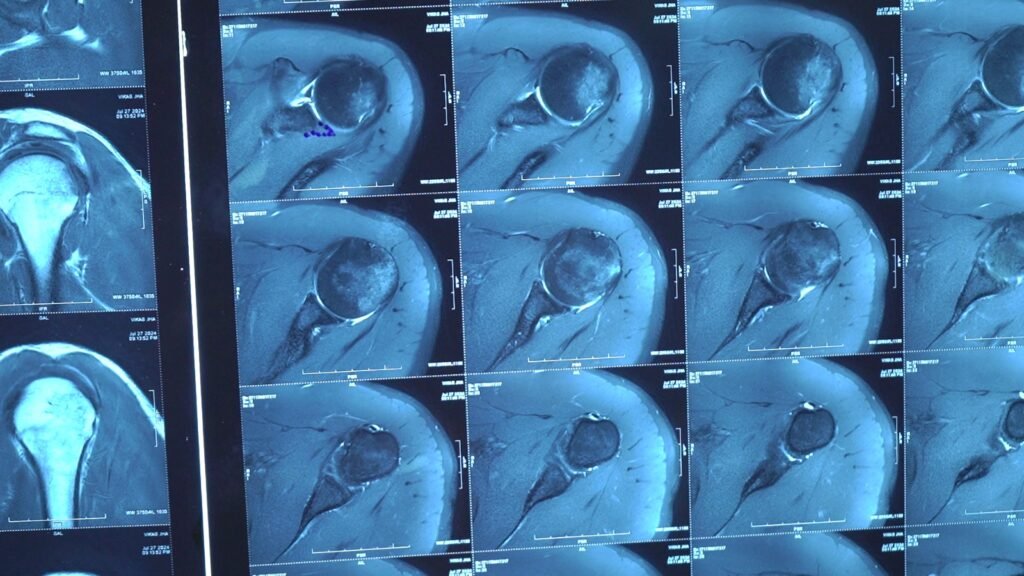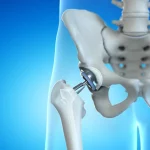Rotator cuff injuries are one of the most common causes of shoulder pain and discomfort. This is especially true among athletes and people who perform repetitive overhead activities. And these injuries can have a huge impact on daily life. This makes even simple tasks like reaching or lifting objects difficult. In this blog, we’ll explore the symptoms, causes, and tips for preventing rotator cuff injuries, with talks from Dr. Ashwani Maichand a renowned orthopedic surgeon known for his work in minimally invasive robot-assisted surgery.
Symptoms of a Rotator Cuff Injury:
- Shoulder pain: One of the first symptoms of a rotator cuff injury is dull, deep shoulder pain. This pain can be severe when moving uphill or lifting objects. Many people also experience increased pain at night. This is especially true if they sleep on the affected shoulder.
- Weaknesses: Significantly reduced shoulder strength is a common symptom. This is especially true when trying to lift things comb your hair or pick up things on high shelves or at work.
- Limited range of motion: An injury can result in stiffness or an inability to move the shoulder freely. As a result, daily activities are limited.
- Cracking or cracking sensation: When moving your shoulder, a clicking or cracking sound may indicate rotator cuff damage. This sensation may occur when attempting to lift your arm.
- Swelling and tenderness: Some people may experience swelling or tenderness in their shoulders. Especially after exercise.
Common causes of Rotator Cuff Injuries:
According to Dr. Ashwani Maichand, Rotator Cuff Injuries can occur gradually or suddenly due to trauma.

Some of the important reasons are:
1) Repetitive stress: Repetitive upward movements. This is common in sports such as swimming, tennis, and baseball, or in occupations such as painting or carpentry. May cause wear and tear over time.
2) Acute injury: A sudden event, such as lifting a heavy object or falling on an outstretched arm. This can cause an immediate injury to the rotator cuff, which can lead to a partial or complete tear.
3) Deterioration with age: As we get older the tendons of the rotator cuff become weaker and more prone to injury. This natural decline is more common in people over 40 years of age.
4) Poor posture: Rounded shoulders or poor posture can cause extra strain on the shoulder muscles. Causes irritation or injury over time.
5) Bone spurs: As the body ages small bone growth Known as bone spurs occur near the shoulder joint. These spurs can irritate the rotator cuff tendons, leading to inflammation and injury.
6) Diabetes: Diabetes can weaken muscle fibers, making them more susceptible to injury, even from minor trauma. Diabetic patients often face an increased risk of rotator cuff injuries due to compromised muscle and tendon strength.
Preventing Rotator Cuff Injuries:
Prevention is important Especially for those who engage in activities that place stress on the shoulder, Dr. Ashwani Maichand emphasizes the following preventative measures to protect the rotator cuff:
- Strengthening exercises: Exercise regularly to strengthen your shoulder muscles. Especially in the rotator cuff area, this helps stabilize the joint and prevent injury.
- Flexibility Training: Stretching is important to maintain flexibility in the shoulders. Incorporating shoulder stretches into your daily routine can reduce your risk of strain and injury.
- Ergonomics Techniques: Use proper technique at work or when exercising, walking, or lifting. Don’t put too much pressure on your shoulders.
- Warm up before exercise: A proper warm-up helps prepare your muscles for exercise. Helps reduce the chance of injury. This is especially important for athletes or people who engage in strenuous shoulder activities.
- Improve Posture: Try to improve your posture to reduce unnecessary pressure on your shoulders. Standing straight behind your shoulders helps keep your shoulder joints aligned and functioning properly.

Treatment Options:

If you have shoulder pain and suspect a rotator cuff injury, prompt treatment is important to prevent further damage. Dr. Ashwani Maichand, a leading orthopedic surgeon It offers a wide range of treatment options, from non-invasive treatments to advanced surgical techniques. This will ensure the best recovery possible through conservative care. Arthroscopic shoulder surgery or the shoulder on the opposite side. Whether through replacement Dr. Ashwani Maichand offers expert solutions based on each patient’s unique needs.
1. Conservative treatment
- Physical therapy: A customized exercise program aimed at strengthening the shoulder muscles. increase flexibility and reduce pain.
- Medicine: Anti-inflammatory drugs or steroid injections to relieve pain and reduce swelling.
- Rest and ice: to reduce stress and promote healing. Especially in minor injuries This is generally the first line of treatment. Especially for little tears or inflammation.
2. Arthroscopic Surgery
- Minimally invasive: This procedure involves small cuts using a camera and special tools inserted to repair a torn rotator cuff.
- Faster recovery: Compared to traditional open surgery. Arthroscopy allows for faster healing, reduced scarring, and less post-operative pain.
- High success rate: suitable for patients with partial or complete tears that do not respond to conservative treatment.

3. Turn the shoulder back:

- For severe cases: Recommended for patients with large, irreversible rotator cuff tears and severe shoulder arthritis.
- Upside-down anatomy: Surgery involves changing the position of the ball and socket joint in the shoulder. By relying on the deltoid muscle Instead of using a damaged rotator cuff to move.
- Restored function: Improves range of motion and reduces pain. Leads to a better quality of life Especially in the elderly or those with complex injuries.





